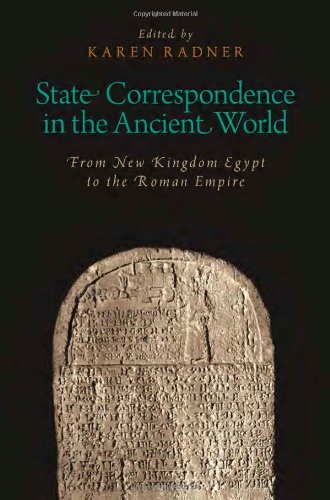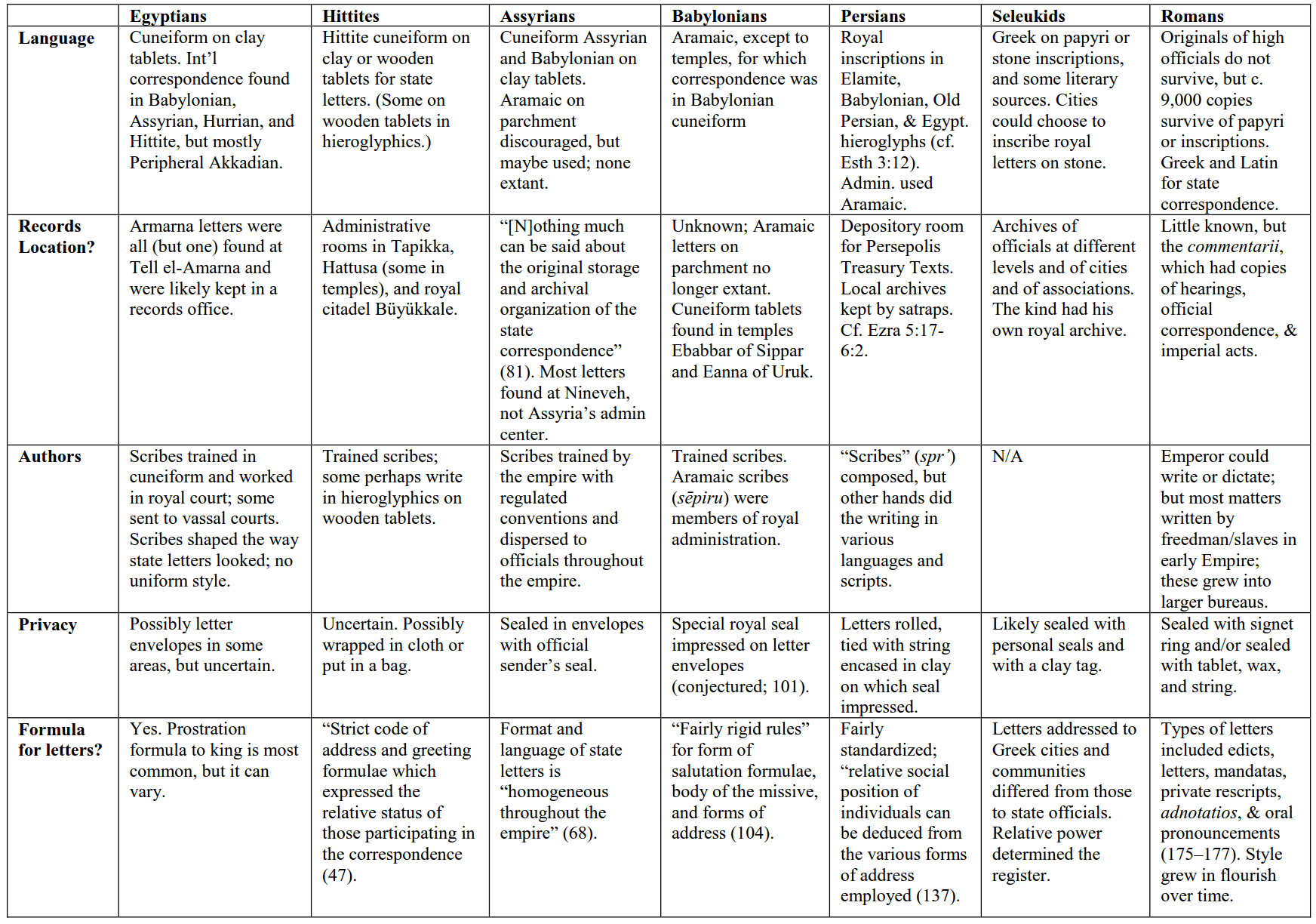 State Correspondence in the Ancient World: From New Kingdom Egypt to the Roman Empire, edited by Karen Radner. Oxford University Press, 2014. 306pp.
State Correspondence in the Ancient World: From New Kingdom Egypt to the Roman Empire, edited by Karen Radner. Oxford University Press, 2014. 306pp.
The central starting point (it’s not quite a thesis; if it is, it’s an implicit one) for this volume is that “long-distance communication plays a key role in the cohesion and stability of early states, and in turn, these states invest in long-term communication strategies and networks” (1). The book is wide-ranging in both geography and chronology, ranging from the Eastern Assyrian Empire to the Western Roman empire, and from the 15th century BC to the 6th century AD. Each chapter covers one state (or a certain period of it): New Kingdom Egyptians, Hittites, Assyrians, Babylonians, Persians, Seleukids, and Romans. The pleasure of this book is that the authors met twice to share their chapter drafts and offer comparisons and contrasts with correspondence in their allotted empire. The result is rare: an edited book that is unified in purpose and whose chapters are similar in structure, content, and purpose.
The relay system of the Assyrian Empire was innovative and groundbreaking. The use of post stations to pass on letters to new messengers for the sake of speed was an innovation in that the letter was dissociated from the messenger, who no longer bore sole responsibility to bear the message from the king. The official road was also the first state-sanctioned and state-maintained road with post stations. This ability to “communicate quickly and reliably across vast distances turned out to be a key element in the cohesion of the empire” (71). Amazingly, “the Neo-Assyrian relay system set the standard for communication speed for almost three millennia, until the advent of the telegraph in the Ottoman Empire in 1865” (74). And this relay system from the Neo-Assyrian Empire really seems to be the bottleneck of the book. Most of the chapters refer to this system to either show how empires were developing systems toward this goal (Egypt and Hittite) or how the system was utilized or developed by later nations. For example, for the Persian Empire, “a key role in holding such a diverse and enormous territory together was played by the network of communication” (121). Likewise, “The Seleukid state, in particular, had an impressively efficient system for transmitting royal information” (159).
Since this work was so cohesive and answered very similar questions about each Empire’s system for state correspondence, I decided to create a chart that summarized the entire book, rather than writing it out in prose. Feel free to download the PDF of the chart for your own use (click on the image below, which is only an image of page 1 of the PDF).
Overall this work was executed better than any other edited volume I have read. The fact that the authors met together twice to share their chapters is evident, given the similar topics covered in each chapter, in a similar order, which makes it quite easy to compare and contrast the systems of correspondence in these seven Kingdoms. Throughout the book there are also several pictures of documents or stelae that are still extant.
One limitation to this volume is its lack of presentation of primary evidence. Footnotes spanned well over 150 in some chapters, which show both the authors’ mastery of the field, but also their reliance on prior studies for many assertions. This volume would have been strengthened, although necessarily enlarged, by more presentation of primary texts. Often, one or two examples will be given to support a claim, but with so much data, it is difficult to accept the claim at face-value. How do I know there is no other data to contradict the claims being made? By providing only samples of primary texts throughout, and without consistent notes that no contrary evidence exists against the claims being made, this study serves well as introductory essays but does not help the reader gain a direct familiarity with the sources.
With this limitation in mind, I highly recommend this learned volume to anyone interested in the systems of state correspondence in the ancient world.
A highly recommended and learned volume on systems of ANE state correspondence Click To TweetYou will not only learn about everything listed my chart above, but more general information about the bureaucratic system of each Empire, details about peculiarities of various kings, and archaeological summaries of great literary finds. This volume is a significant contribution to the study of the ancient Near East, especially with regard to the bureaucracy of each Empire.
Preview it or buy it here on Amazon.

